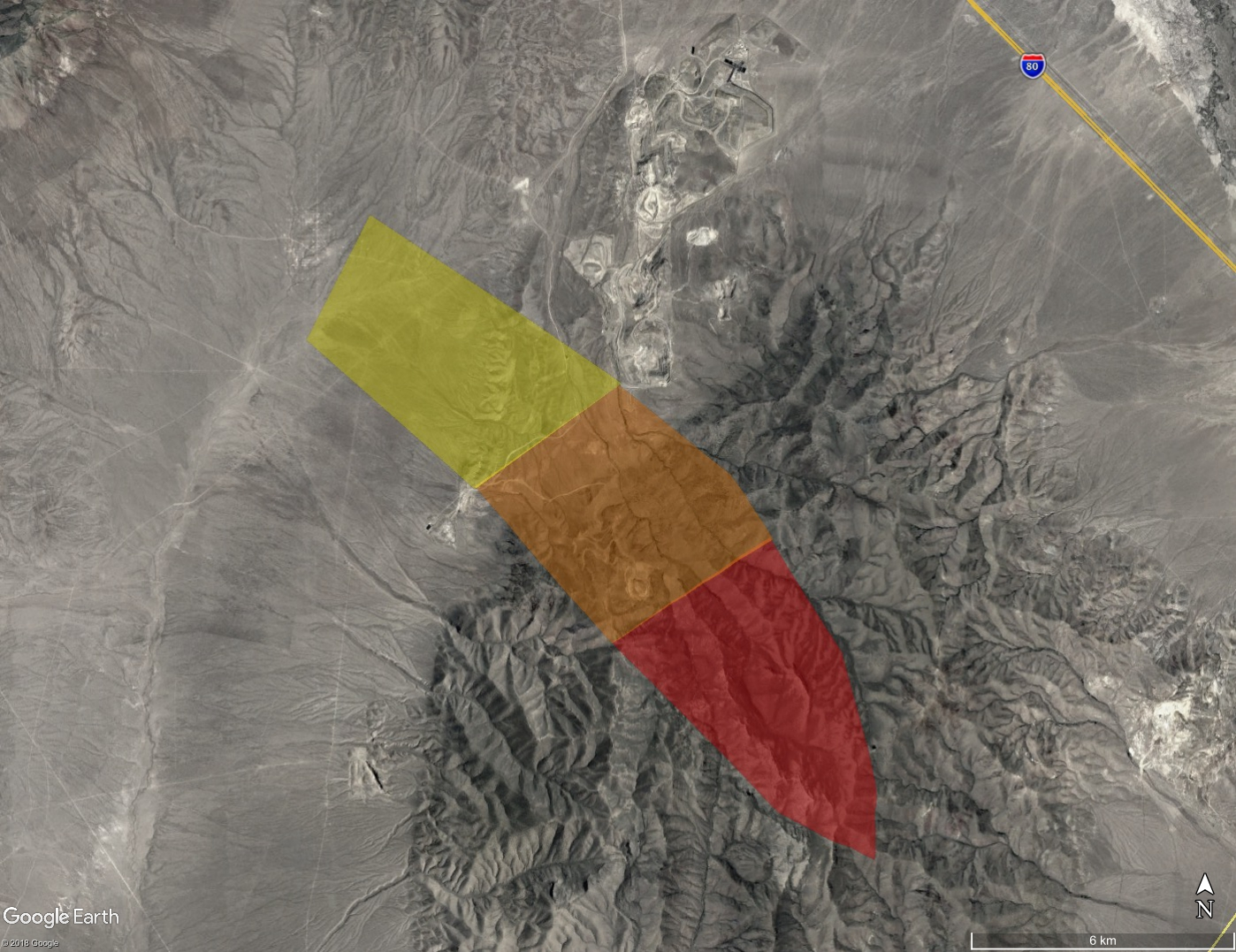DATE/TIME8/22/2012 @ 06:16 UTC8/22/2012
|
LAT/LONG40.64717 • -117.16569
40.64717
|

This meteorite fall was a very large but lightly reported fireball that occurred at 11:16 AM local time on 21 August 2012, or 22 Aug 2012 06:16:49 UTC. The fireball was sparsely reported due to its remote location but produced a large number of meteorites and only 11 eyewitnesses reported it to the American Meteor Society across California, Nevada, and Idaho. No sonic booms were reported to AMS, as no local eyewitnesses reported the event.
A large number of meteorites have been recovered from this event.
This event is recorded as American Meteor Society event number 1192 for 2012. Signatures of falling meteorites can be found in imagery from one nearby weather radars. In the NEXRAD weather radar network operated by NOAA, the KLRX (Elko, NV) radar records signatures of falling meteorites.
The first appearance of falling meteorites on radar occurs at 06:19:27 UTC and 3,150 m above sea level (ASL) in the 0617 UTC data set for the KLRX radar in the 2.4 degree elevation radar sweep. Signatures consistent with falling meteorites appear in a total of eight radar sweeps from the radar, with a final signature appearing at 06:21:03 UTC.
Calculations of mass and total number of meteorites based on weather radar data indicate that this meteorite fall is approximately 0.4x the total mass of the Park Forest, IL meteorite fall in 2003. This fall’s fragmentation behavior may be unusual based on eyewitness reports, however. Eyewitnesses reported a very large fragment that survived the fireball and continued down-range, glowing and descending to low altitude further to the southwest of the strewn field. If this mass is found, the total mass of this fall may be significantly increased over the calculated value.
Meteorites recovered from this event have been classified by the Meteoritical Society as an L6 chondrite.
